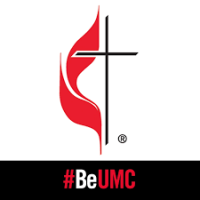 Dept. of Energy grant will turn a theory and a lab model into a full-scale testing device.
Dept. of Energy grant will turn a theory and a lab model into a full-scale testing device.
October 22, 2012 (San Diego) – For the last few years San Diego State University engineering professor Fletcher Miller has been working in his campus lab to prove a theory about a more efficient way to produce solar energy. Thanks to a U.S. Department of Energy grant of $3.9 million, he will now be able to test his theory in a more realistic scenario.
The grant, from the SunShot Initiative, will enable Miller and his team of graduate and undergraduate student researchers to take a lab-scale model and, over the next four years, develops a full-scale model that will be tested at the National Solar Thermal Testing Facility in New Mexico.
Miller and his team have developed a receiver, which sits atop a solar thermal tower and helps drive the turbine that generates electricity in a more efficient way. In a typical plant, the receiver heats a pressurized fluid – usually water - to drive a turbine. Because these plants are located in the middle of the desert, that cooling water needs to be imported. Miller’s solution is to heat air particles, rather than water, similar to how an aircraft engine works.
[Watch a demonstration of the lab-scale Solar Simulator]
In the design of the receiver, a window is applied to the front, and carbon nano particles are released into the air inside the receiver. Developing this quartz window at full scale, according to Miller, will be the most important, and most challenging part of the project.
“Because it’s not an off-the shelf item, and because the material is very difficult to work with, the window is going to be difficult to get just right,” Miller said, noting that L3 Brashear will be helping with the design and fabrication of the window. “We’re going to have to keep the temperature of the window below 800 centigrade.”
The carbon nano particles inside the receiver absorb the sunlight from a field of mirrors surrounding the plant and quickly transfer that energy to the surrounding gas. The particles then burn up in the hot gas, which is used to drive the turbine.
To date, Miller has been running experiments on a lab-scale receiver. Many of the components used in his experiments are the result of his students’ senior projects. Taking his experiments to the NSTTF, run by Sandia National Labs, is a great step forward.
“They’ve got a five thousand to six thousand kilowatt testing facility,” Miller said. “It will be much different running it at that level than at the three kilowatts we’ve been testing at.”
Miller and his team, which also includes consultants from Rocketdyne, Solar Thermal Technologies and Solar Turbines, will spend 18 months designing the large scale receiver. They will spend another 18 months building it. The final year will be spent in New Mexico testing it.
“The hope is we prove the concept on a scale actually used to generate electricity,” Miller said. “Five megawatts is a good scale to prove the component works as expected. These solar plants today are competing with cities and farmers and other users for water. We’re trying to prove there’s a better way to do this.”
Miller’s research began with a grant from Google’s RE<C for the design of the concept. The California Energy Commission gave Miller a grant to build the solar simulator and a lab-scale receiver to simulate process in the laboratory. And Sandia National Labs’ grant is for the study of longer-term back up, also known as thermal storage, that will allow this and other solar plants to operate in the evening or even at night, until they can be recharged again the next day.











Recent comments